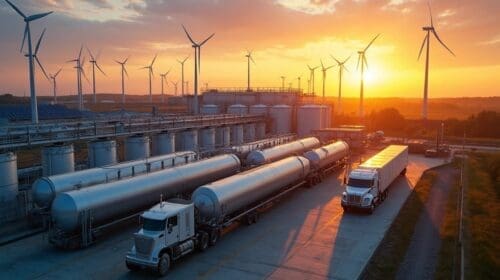Offshore drilling has been a cornerstone of global oil and gas production, enabling access to reserves deep beneath the ocean floor. However, it brings unique challenges related to safety, cost, and environmental impact that are more complex than onshore operations. As drilling technology advances and oil demand continues, addressing these challenges is essential to ensure safe and sustainable operations. Consegic Business Intelligence analyzes that the oilfield services market is growing with a healthy CAGR of 5.9% during the forecast period (2023-2030), and the market is projected to be valued at USD 468.58 Billion by 2030 from USD 298.83 billion in 2022.
Offshore drilling is riddled with safety hazards that are unavoidable due to the rigorous and unpredictable marine environment. Employees are endangered by the possibility of extreme weather, including hurricanes and stormy seas. These can cause the interruption of operations, the failure of equipment, and even the endangering of human lives. In addition, the offshore platform’s restricted and isolated nature limits quick emergency medical care and evacuation options, making accident and injury management more challenging than onshore.
Blowouts, that is, uncontrolled releases of oil or gas, are the most dangerous hazards. Despite the existence of safety technologies like blowout preventers (BOPs), they are not completely free from faults. For example, in the case of the 2010 Deepwater Horizon accident, the blowout in the sea’s deep part caused the loss of lives, environmental degradation, and a lot of operational and reputation costs. The safety procedures should be continually enhanced to also include the high pressures and temperatures experienced in deep-sea drilling environments, where there is a high likelihood of equipment and systems failure. Upgrading these stringent safety standards, as mentioned above, entails huge pretentiousness in the advanced safety protocols, training, and emergency response mechanisms.
The amount of money needed to be spent on offshore drilling is way greater than the cost of onshore projects. The erection of offshore rigs, subsea systems, and auxiliary infrastructure is expensive and requires a total expenditure of billions of dollars. Also, offshore platforms must be carefully designed so that they can endure severe marine conditions, which in turn leads to a rise in material and maintenance costs. Sophisticated equipment like floating production systems, drilling ships, and semi-submersible rigs are not just costly to construct but also have high operating and maintenance costs.
Offshore locations cause operating costs to be increased, remote areas are the main disadvantages of these locations, and the logistics and supply chain management become more challenging. Offshore platforms need to be supplied with materials, fuel, and personnel, which must be transported to the platforms via expensive logistic planning and infrastructure. Furthermore, offshore projects often take a long time or even decades to finish due to the complexity of the work, which means that the investment of money stretches over many years before returns are achieved. As the world is becoming more and more environmentally sensitive, oil companies are now primarily forced to try to out-optimize their costs while not jeopardizing safety, the precarious route that requires accurate financial management and innovative cost-control techniques.
Offshore drilling is a process that potentially puts the ecosystems of marine life at risk; the risks are quite high. Oil spills, be it blowouts, equipment failures, or human errors, can be very harmful to the animals and the unfortunate species that come under crisis. Birdlife covered with oil, the coral reef infected, and the population of fish being disturbed are just some of the spill aftereffects that can last a long time – some, many even decades. The consequences of the major spills are borne by these industries and tourism as well, thus causing economic damage in their area. Operations that promote legal pollution are taking place all the time, though. Routine high-seas drilling indirectly wastes water, which might contain chemicals and metal contaminants, thus threatening not only water quality but also marine organisms. Besides, loud surveys are conducted for oil detection, which emits powerful vibes that scare off/count the favorite aquatic species like whales and dolphins.
Initiatives to lessen the environment’s damage have paved the way for rules and technological advancements that are intended to bring down the ecological footprint of offshore drilling. For instance, zero-discharge policies, where no drilling waste is discharged into the ocean, are adopted. The best results are achieved by aligning with the local regulatory authorities, applying advanced technologies, and strictly adhering to the procedures of the oil drilling companies.
Conclusion
Even though offshore drilling is still the most important part of the energy sector on a global scale, the issue of safety and economic and environmental impact makes it difficult. The immediate threats to the workforce, the high investments, and the ecological hazard that may arise offshore make it one of the most unpredictable ventures in the energy business. Nevertheless, with the improvements in safety technology, modification of regulations, and adoption of green methods, the sector is slowly getting adjusted to overcome these problems. Uninterrupted development in offshore drilling will become possible only if oil companies are innovative and use technologies for safe and environmental operations, as well as stay flexible under the world’s changing legislation and the environmental context.
Oil and gas operations are commonly found in remote locations far from company headquarters. Now, it's possible to monitor pump operations, collate and analyze seismic data, and track employees around the world from almost anywhere. Whether employees are in the office or in the field, the internet and related applications enable a greater multidirectional flow of information – and control – than ever before.




![Why Enhanced Geothermal Energy Could Be Your Next Smart Investment [2025 Guide]](https://b1006343.smushcdn.com/1006343/wp-content/uploads/2025/06/Why-Enhanced-Geothermal-Energy-Could-Be-Your-Next-Smart-Investment-2025-Guide-500x280.jpg?lossy=2&strip=1&webp=1)




